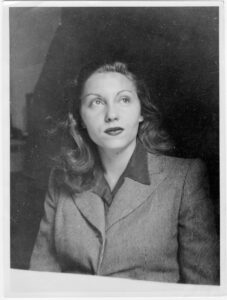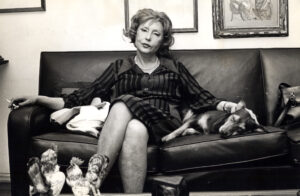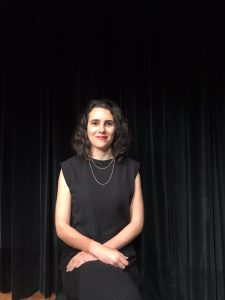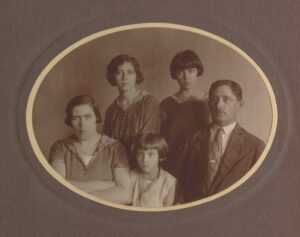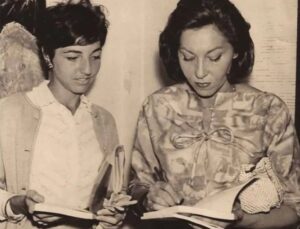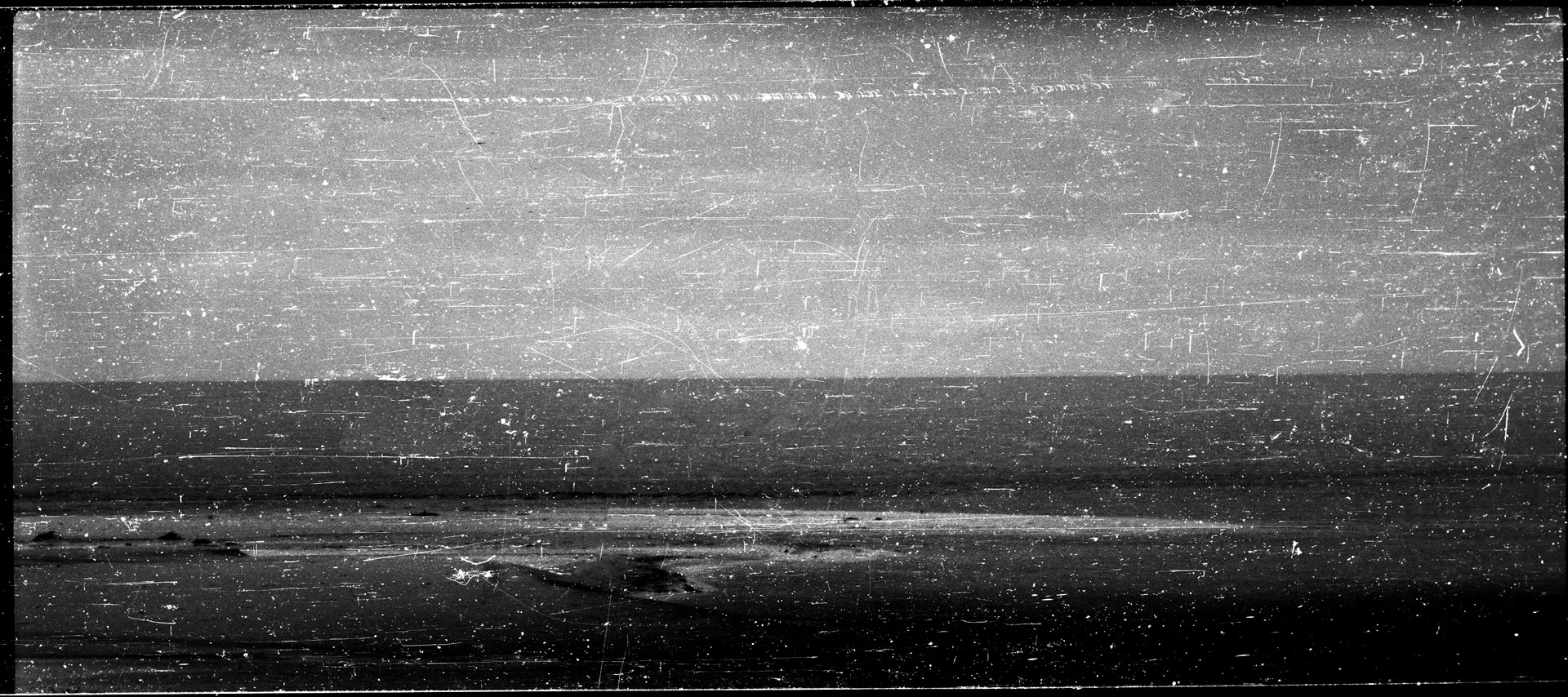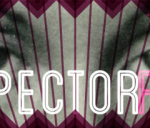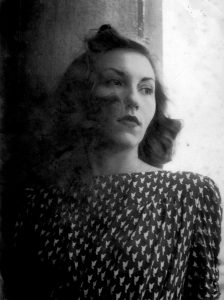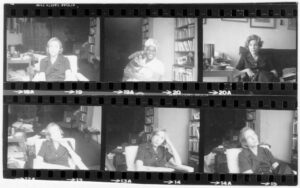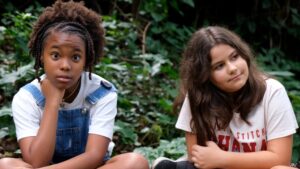Stigger, Veronica. “Me, A Witch?”. IMS Clarice Lispector, 2024. Disponível em: https://site.claricelispector.ims.com.br/en/2024/05/27/me-a-witch/. Acesso em: 08 January 2026.
In January 1975, Clarice Lispector received an invitation letter, signed by Simón González, a Colombian businessman, politician, and mystic, inviting her to take part in the First World Congress of Witchcraft, which would be held between August 24 and 28 of that same year in Bogotá, Colombia. It was a standard letter, written in English, sent to all guests, with the same address: “Dear Friend of the Unknown.” It briefly described the aims of the event, which would not be restricted to witchcraft, but would also cover other “types of interest in the unusual”: “to bring together people from all walks of life who are deeply interested in the study of man’s inner powers and of the universe’s occult forces beyond the reach of the five senses.”1 Therefore, “witchcraft” (brujería) was understood in a broad and derivative sense, which is even more evident in the passage of the letter in which González refers to the recipients’ field of activity: “whether your field of research is witchcraft or parapsychology, astrology or alchemy, ancient magic or modern sorcery, extrasensory perception or any other of the countless means through which men and women become aware not only of normally untapped capacities within themselves, but also of a pulsating reality beyond their senses, and of mystical realms of love, joy, and power that are never reached by unbelievers.” After all, the letter also said, justifying the holding of the congress: “The universe is full of fascinating mysteries, and men and women must be open to them, prepared to delve deeply into them and thus arrive at a subtler understanding and a fuller love for life.”2 We do not have access to the letters written by Clarice Lispector about the congress, but we know that she responded affirmatively to the call in two letters: one dated January 31 and the other dated March 2, 1975.3 In interviews, Clarice commented that she received, shortly after the letter, an international phone call, confirming the invitation.4
But why was Clarice Lispector invited to the First World Congress of Witchcraft? According to Teresa Montero and Lícia Manzo, the invitation to the event in Bogotá resulted from the writer’s participation in the IV Congreso de la Nueva Narrativa Hispanoamericana, which was held the year before, also in Colombia, but in Cali, between August 14 and 17.5 Clarice was accompanied by her friend Lygia Fagundes Telles, and both of them, alongside Walmir Ayala, participated, at the narrative congress, in the roundtable about contemporary Brazilian literature.6 In fact, in a letter to Clarice talking about his participation in the Congress of Witchcraft, the Colombian writer Pedro Gómez Valderrama mentions that a mutual friend, the fellow writer Gustavo Álvarez Gardeazábal, had already alerted him about her desire to attend the event.7 Gardeazábal had been president of the IV Congreso de la Nueva Narrativa Hispanoamericana.
Would Clarice have said anything at that 1974 congress that could indicate some relation between her and witchcraft? Lygia Fagundes Telles, in the interview recorded on video in 2005, on the occasion of the International Literary Festival of Paraty (FLIP)8, when Clarice was the honored writer, recalled that her friend, urged by the audience, had spoken about Near to the Wild Heart, while she had limited herself to her novel The Girl in the Photograph. In principle, therefore, nothing indicated that Clarice had addressed anything that could be associated with witchcraft.
The question then could perhaps be different: what would the event organizers have seen of witchcraft in her work? In her extensive biography about Clarice Lispector, which was recently revised and expanded, Teresa Montero recalls that, in December 1966, the literary critic Emir Rodríguez Monegal, in a text about the writer published in Mundo Nuevo, a journal founded by him in Paris, referred to her in these terms: “Due to her focus on the mythological whole, she is more of a sorceress [hechicera] than a writer. Her books reveal the incredible power of words that work on the reader’s imagination and sensibility.”9
At the time of the First World Congress of Witchcraft, therefore, a certain halo of mystery had already been built around not only Clarice’s writing, but her own person. Not by chance, Simón González opens the letter he addressed to her on July 8, 1975, by dealing with practical matters (such as tickets and accommodation in Bogotá during the congress): “Before meeting you, when I read your books, I was forming the image of the person who wrote them. When I met you in Rio de Janeiro, my suspicions were confirmed: only a person with those eyes full of beauty, magic, and depth could have written them.”10 When commenting on Clarice’s participation in the event, the Jornal do Brasil followed suit: “with her compulsive inner strength producing on paper more magic in people than any bewitching object – perhaps she is the one that causes the most reaction in Congress.”11 When describing the outfit that Clarice had supposedly been wearing upon her arrival at the Colombian capital, Mário Pontes, a reporter sent by that same newspaper to Bogotá, gave an image to the mythology that was created around her: “[Clarice] disembarked totally dressed in black, with many amulets hanging from her neck.”12 Clarice vehemently denied, on more than one occasion, that she was dressed like that. To Isa Cambará, she said that “the reporter who saw her dressed strangely and full of amulets must have been a victim of poor eyesight, an excessive imagination, or bad faith, even.”13 Ignácio de Loyola Brandão, at the time editor of Planeta magazine and one of the Brazilian journalists who traveled to Bogotá to cover the event (his report was published in the special issue of October 1975, in which, curiously, Clarice Lispector’s participation is not mentioned)14, commented that, years later, Lygia Fagundes Telles would have told him the following about Clarice: “When she spoke, she was enlightened. She was possessed.”15
And what did Clarice herself think about this invitation? To the Diário de Notícias, one of the first newspapers to report on her participation in the Congress of Witchcraft, on May 20, 1975, she was adamant: “I’ve never done witchcraft and I don’t believe I was a victim of any.” As for the invitation, she asserted that she had accepted it out of curiosity: “I’m going to look and listen.”16 It was a declaration that she would repeat to the Jornal do Brasil less than a month later.17 To this periodical, evoking the justification for holding the event that was in the first invitation letter received, she added: “The Congress talks about the development of occult forces and everything that is occult attracts me. Besides, it concerns white magic18, no harm can come from that, don’t you think? Presently this story of witchcraft is in the air. It’s as if we were suddenly revisiting some missing link from the Middle Ages. Actually, I’m just curious, without taking anything too seriously, without expecting any big revelations. I’m going to talk – they say I was the only Brazilian writer invited – about magic in literature. The problem is that they’re expecting a lot from me, and I don’t think I have much to give.”19
The Jornal do Brasil also mentioned that Clarice was found “frightened and sweet as always.” As for the fright, there was good reason: the congress promised to be gigantic. The report, based on a conversation with the meeting’s organizer, Simón González, said that three thousand people were expected from abroad, in addition to 300 thousand Colombians. González also asserted that he was counting on the participation of, among others, Salvador Dalí, in addition to allegedly already being in contact with Jorge Amado. In the Diário de Notícias text cited earlier, there was also talk of the participation of Federico Fellini, Gabriel García Márquez, and Carlos Castañeda.20 The same Diário de Notícias, on the eve of the congress, guaranteed that it would include, in its program, “a dissertation by the film director Michelangelo Antonioni on ‘films and witchcraft.’”21 For its part, Manchete magazine, on August 30, in what perhaps had been the most complete coverage of the event, occupying six highly illustrated pages, reported the participation of several personalities, such as Uri Geller and the aforementioned Castañeda, Fellini, García Márquez, and Antonioni. The industrialist João Melo da Costa would also be going, accompanied by his lawyer Jorge de Oliveira Beja, in order to try to uncover the mystery of the kidnapping of his 10-year-old son Carlos Ramires da Costa, Carlinhos, who had disappeared from his home in the neighborhood of Santa Teresa, in Rio de Janeiro, in 1973, a case that has never been solved and to this day is still surrounded by mystery.22
One of the ideas of the event was to make contact with spirits, such as those of John Kennedy, Papa Doc, Perón, Hitler, Noah, and Messalina.23 The Diário de Notícias report on May 20 also ended by registering Clarice’s astonishment at the magnitude that the congress was acquiring: “When I accepted the invitation, I thought it was going to be a modest meeting of a few people about an issue that awakens everyone’s curiosity, but now I’m almost frightened: the idea of meeting García Márquez and Fellini gives this meeting more responsibility and greater scope.”24 Of all those mentioned in the newspapers, only Uri Geller was present and he was the main attraction – with Clarice Lispector being the second biggest attraction.25 João Melo da Costa, Carlinhos’ father, also attended the congress, not as a guest, but on his own.26 Castañeda was not there, but his experiences were discussed by his partner and university colleague, the English anthropologist Douglas Richard Price-Williams, who presented a series of experiments done with his friend regarding telepathic transmission through dreams.27 His lecture, by the way, was given immediately after Clarice Lispector’s, on Tuesday, August 26.
On August 17, the Diário de Notícias, which had been following the development of preparations for the congress, published a large report by Ubiratan Teixeira in which he interviewed some of the guests, including Clarice Lispector, of course. To the writer, he asked: “Why were you invited, Clarice?” This time, she did not hesitate to respond: “I don’t have the slightest idea.” Then she added, referring to the previous year’s trip: “But the invitation filled me with honor and pride: I immediately accepted. In addition to being a chance for me to visit Colombia again, a charming country, I’ll be in contact with the world of the supernatural. This is very good for a writer.”28 Later, in the same interview given at her apartment in Leme, in front of a poster of the Congress of Witchcraft hanging on the living room wall, she ventured a hypothesis for having received the invitation: “You know, maybe it was because of a curious comment that a South American critic once made about my literature. He wrote that I was ‘una bruja’ in literature. I found that really strange. Me, a ‘bruja?’ A witch? But later I had the chance to meet him and then he clarified, laughing. ‘Si, la señora escribe con magia. Es una mágica de las letras.’”29 It is possible that Clarice Lispector was referring to Monegal, the Uruguayan. She further asserted: “I agree that the writer, in general, is even somewhat of a sorcerer, a magician. That’s evident!”30
In the large report in Manchete magazine, in a passing comment, Ib Teixeira had also highlighted this interest of the time: “Rosemary’s Baby, The Exorcist, and the literary work of Carlos Castañeda and García Márquez – which are very popular in Europe today – perhaps contributed to this outbreak of witchcraft.” 31 Interestingly, in the short story “Where Were You at Night,” from the book of the same name by Clarice Lispector published the year before the congress, in 1974, the journalist character comments to her friend by telephone: “Claudia, sorry to call at this hour on a Sunday! But I woke up with a fabulous inspiration: I’m going to write a book about Black Magic! No, I didn’t read that one about the Exorcist, because I heard it’s no good and I don’t want everybody saying I copied it.” 32 It is this same story, in fact, that discusses a strange ritual, in which several people participate and which is led by an androgynous being.
Ever since her first statements to the newspapers with respect to her participation in the congress, Clarice had been shifting the focus from “witchcraft” to “magic,” the latter being related not to what could be supernatural in the world, but to what was natural. In that first report in the Diário de Notícias, she had already said: “Everything is very mysterious, but I don’t believe it proves the mystery and I really believe that everything deep down is magical. For me, the rain falling is nature’s magic. I don’t look for magic in the supernatural: I find it day by day in so-called natural phenomena.”33 This would be the view adopted from then on and which would be made clear in the text written in English to be read at the congress, titled “Literature and Magic,” in which she begins by relating magic and natural phenomena in almost the same terms as the statement given to the newspaper: “I have little to say to a demanding audience. But I will say one thing: for me, whatever exists, exists by some kind of magic. Furthermore, natural phenomena are more magical than supernatural ones.”34 She then exemplified the assertion by recalling a violent storm that she had witnessed around two months earlier in Rio de Janeiro.
Clarice ended up not presenting this text at the congress, but instead preferred to read her short story “The Egg and the Chicken,” which had been published in The Foreign Legion, in 1964. To introduce the reading of the story (“which is mysterious even for me and has a secret symbology”)35, she prepared a brief presentation text, in which, this time, she associated “magic” with the unconscious, not only individual, but also collective: “I have little to say about magic. Actually, I think that our contact with the supernatural should be done in silence and in a deep solitary meditation. Inspiration, in all forms of art, has a touch of magic because creation is an absolutely inexplicable thing. Nobody knows anything about it. I don’t believe that inspiration comes from the outside, from supernatural forces. I suppose it emerges from a person’s deepest self, from the deepest individual, collective, and cosmic unconscious.”36
Clarice thereby reinforces what she had already suggested in interviews on account of the invitation to the Congress of Witchcraft: every artistic creation would be somewhat magical and mysterious. Every writer would consequently be somewhat of a sorcerer. Let us not forget that the narrator of Água Viva, when she says that she knows “another life [….] a life of magical violence,” describes herself as follows: “I am the sorceress of that silent bacchanal.”37 Regarding the connection between literature and witchcraft, how can we not also recall the nickname that Moysés Vellinho gave to Machado de Assis, the “Wizard of Cosme Velho.”38 The nickname became popular with the poem “A um bruxo, com amor,” [To a Wizard, with Love],39 by Carlos Drummond de Andrade, to the point of attributing its formulation to the poet, who even wrote a text to reestablish the truth.40 Drummond, incidentally, in another poem, “Quintana’s bar,” imagines a meeting with the Rio Grande do Sul poet, who, at a given moment, takes him to fly “over rooftops, clinging to the unearthly witch,” and, from above, points out houses: “that of Rimbaud, that of Blake, and the grotto of Camoens.”41
He ends by saying: “Cryptographic signs remain engraved in the eternal sky — or on the table of an extinct bar as the poet Mario Quintana, leaning over its marble top, travels on into silence.”42 Traveling, imagining: that is how it is to fly clinging to a witch.
Returning to the congress, Domingos Meirelles, a special envoy of the O Globo newspaper to Bogotá, hinted that, if Clarice did not read “Literature and Magic,” she may have mentioned a few aspects raised by the text: “Clarice spoke about her personal experiences in the field of Parapsychology, described her literary work, and ended the session with the reading of one of her fantastic stories, ‘The Chicken and the Egg’ [sic], which was much appreciated by the attendees.” 43 The only photo that illustrates Meirelles’ report shows Clarice Lispector, wearing glasses, reading from a paper that she has in her hands, next to Simón González, who is watching her. For her part, the Colombian Alegre Levy, who was responsible for covering the congress for El Tiempo, in Bogotá, highlighted what seems to have been a performance associated with the reading – which she herself did not appreciate: “Clarice Lispector, a Ukrainian writer residing in Brazil, brought yawns to the auditorium with a complex lecture titled ‘The Egg and the Chicken,’ in which a chicken was thrown into the air several times while a dancer ate a raw egg on the ground.” 44 Ignácio de Loyola Brandão, who, as previously mentioned, was present at the event, said that he did not remember such a performance. But he recalled the audience’s reaction to the reading: “In respectful silence, people – around five hundred – looked at Clarice attentively and, when she finished, the applause steadily increased.” 15 Isa Cambará, who was not at the congress but interviewed Clarice shortly after her return from Bogotá, noted: “Her participation in the congress – which was summed up in the reading of one of her short stories, ‘The Egg and the Chicken’ – would have been booed by some, applauded by others. According to a third version, the Brazilians present would have withdrawn, in protest against the presence of a writer at a meeting of ‘sorcerers.’” 45
In a text for a Colombian newspaper, it is the writer and filmmaker Alberto Duque Lopez who gives more details about the reading of the short story by “the Brazilian novelist and mentalist Clarice Lispector about the egg, its role as a magical element, and the influence it exerted on the life and work of the artist” and the audience’s reaction. Based on his account, Clarice would not have read the story herself, but rather the interpreter – which leads us to assume that the aforementioned photograph, in which she appears reading from a paper in her hands, perhaps captures the moment in which she read the short introduction to the short story: “With reddish hair, tight lips, flanked by Simón González and an interpreter who had the exclusive mission of making known the account dedicated to the egg as a key piece in her intellectual and social formation, the celebrated writer who has published several books, which have reached the country in Argentine editions, kept the audience watching her in suspense, as she looked at the closed circuit television monitors, Francisco Norden46 who is filming thousands of feet of film about the congress, the newly painted ceiling, the poet Cobo who was dying of laughter, and the extravagant characters who at a given moment changed the aroma of the pavilion’s atmosphere.” He further added: “‘Literature and Magic’ was the title of the writer’s lecture: it was an authentic ‘happening’ with the participation of not only the lecturer who almost did not open her lips, her translator, González, and hundreds of spectators who did not know what attitude to adopt in the face of a magical, poetic, and naive material that summarized the position of the Brazilian intellectual in the face of the main problems of today. […] When the reading ended, Simón González, surely interpreting the feelings of several spectators, told her, after giving her a hug, that it was one of the most beautiful and poetic moments of the congress.”47 The director of the documentary Congreso Internacional de Brujería – El Woodstock de la brujería (2022), Roberto De Zubiría, in a roundtable about the film, provided a good explanation for so much hearsay about the reception of “The Egg and the Chicken,” by Clarice: given the complexity of the story, the interpreter was unable to translate it right. “He got all confused in the translation and the people who were watching didn’t understand what was going on,”48 he said.
If “The Egg and the Chicken,” by itself, was already mysterious even for its own author, in the imprecise translation presented at the event, the errors probably multiplied the mystery. Nonetheless, perhaps we could think like the Author of A Breath of Life, a book that Clarice had been preparing precisely during that period in which she participated in the Congress of Witchcraft: “perhaps whatever is correct lies precisely in error?”49 Perhaps? With Clarice, one never knows the truth (or the error). This is her greatest spell.
- Letter from Simón González to Clarice Lispector, Jan. 1975. Rui Barbosa House Foundation Collection.[↩]
- Idem.[↩]
- Cf. Letter from Pedro Gómez Valderrama to Clarice Lispector, March 21, 1975. Rui Barbosa House Foundation Collection.[↩]
- Cf. “As bruxas ainda à solta,” Jornal do Brasil, June 11, 1975, p. 5; “Clarice surpresa com o vulto dos bruxos,” Diário de Notícias, May 20, 1975, p. 7.[↩]
- Teresa Montero and Lícia Manzo (ed.), Clarice Lispector: outros escritos, Rio de Janeiro: Rocco, 2005, p. 119.[↩]
- Tavares de Miranda, “Literatura brasileira na Colômbia,” O Cruzeiro, Sept. 11, 1974, p. 106. Cf. also Teresa Cristina Montero Ferreira, À procura da própria coisa, Rio de Janeiro: Rocco, 2021, p. 592. In this extensive biography of Clarice Lispector, which has recently been re-edited and expanded, Teresa Montero also suggests that the invitation was due to the generation that orbited around the magazine Mito, including Pedro Gómez Valderrama, who responded to the writer’s letter of acceptance. The periodical, however, had not been around for 12 years when the congress was held in Cali; it circulated between 1955 and 1962.[↩]
- Letter from Pedro Gómez Valderrama to Clarice Lispector Op. cit.[↩]
- Available at: https://www.youtube.com/watch?v=UGg7Xg89m1c.[↩]
- Apud Teresa Cristina Montero Ferreira, À procura da própria coisa, Rio de Janeiro: Rocco, 2021, p. 591.[↩]
- Letter from Simón González to Clarice Lispector, July 8, 1975. Rui Barbosa House Foundation Collection.[↩]
- “As bruxas ainda à solta” Op. cit.[↩]
- Mário Pontes, “Bruxos se reúnem no dia do diabo,” Jornal do Brasil, Caderno B, Aug. 25, 1975, p. 1.[↩]
- Isa Cambará, “Clarice Lispector: ‘Não escrevo para agradar a ninguém,’” Folha de S. Paulo, Sept. 10, 1975, p. 40. Cf. also Walda Menezes, “Mulher em dia – Movimento,” Diário de Notícias, Revista Feminina, Sept. 21, 1975, p. 5.[↩]
- Cf. O Congresso de Bruxaria de Bogotá, Planeta Especial, no. 37-A, Oct. 1975.[↩]
- Telephone conversation with Ignácio de Loyola Brandão, Oct. 6, 2020.[↩][↩]
- “Clarice surpresa com o vulto dos bruxos” Op. cit. [↩]
- “As bruxas ainda à solta” Op. cit. [↩]
- There was, especially in Brazil, a concern about the term “witchcraft” for the congress, as expressed, for example, by Jairo Alves de Barros, an attorney for Saturin, a Rio de Janeiro travel agency responsible for selling the packages. He draws attention to the pejorative meaning that the word “witchcraft” would have in Portuguese: “We prefer the name Congress of Occult Sciences, because ‘witchcraft’ in Brazil is associated with macumba [voodoo], with low-level occult rites. In Colombia, ‘brujería’ is understood as the set of all subjects that scientists have not yet unraveled. It is research, a science, too.” [“Nós preferimos o nome de Congresso de Ciências Ocultas, porque ‘bruxaria’ no Brasil tem um sentido de macumba, de ritos baixos do ocultismo. Na Colômbia, entende-se por ‘brujería’ o conjunto de todos os assuntos que os cientistas ainda não desvendaram. É pesquisa, ciência também.”] (“Para o congresso de bruxaria, muitos inscritos no Rio,” O Globo, July 16, 1975, p. 13).[↩]
- “As bruxas ainda à solta” Op. cit. [↩]
- “Clarice surpresa com o vulto dos bruxos” Op. cit. [↩]
- “Bruxaria em Bogotá: estudo ou embuste?” Diário de Notícias, Aug. 14, p. 2.[↩]
- Ib Teixeira, “A grande festa dos bruxos,” Manchete, Aug. 30, 1975, pp. 5-11.[↩]
- The Diário de Pernambuco had already anticipated, based on a conversation with parapsychologist Alberto Velázquez, that one of the attractions would be “giving material form to a spirit” [“dar forma material a um espírito”], such as those of the Haitian dictator François Duvalier “Papa Doc” and the Venezuelan doctor José Gregorio Hernandez, “to whose spirit miraculous cures are attributed” [“a cujo espírito se atribuem curas milagrosas”] To achieve such an objective, seven mediums from Venezuela and “several” [“vários”] from Colombia would be present (“Congresso de bruxas promete,” Diário de Pernambuco, July 13, 1975, p. 14). Cf. also “Bruxos invocarão Papa Doc,” O Globo, July 13, 1975, p. 17; “Para o congresso de bruxaria, muitos inscritos no Rio,” O Globo, July 16, 1975, p. 13.[↩]
- “Clarice surpresa com o vulto dos bruxos” Op. cit. [↩]
- Cf. Julián Sánchez González, “Activismo cultural e contracultura souvenir: el Primer Congreso Mundial de Brujería, 1975,” Boletín Cultural y Bibliográfico, vol. LVII, no. 104, 2023, p. 9.[↩]
- According to Manchete magazine: “The industrialist João Melo da Costa Ramires arranged a complimentary plane ticket, stayed in a modest hotel, and sought to make contact with the biggest experts in the occult sciences. The famous Uri Geller, who bends forks by the force of thought, was as frank as possible: ‘Your son has never seen me and that’s why we can’t communicate mentally.’ Carlinhos’ father was not discouraged. He knocked on several doors, spoke to pythonesses and magicians, but nobody wanted to have anything to do with it. Finally, he found a little hope with the Arhuaco Indians. Claiming that the reigning confusion in Bogotá was not conducive to in-depth work, the Indians asked João Melo to return in October. They kept Carlinhos’ photos and belongings and will get to work right away, trying to locate the boy through ancient occult processes. The Arhuaco Indians inhabit a region of the Sierra Nevada de Santa Marta. They went down to Bogotá only as observers, but they avoided getting involved in the witchcraft happening there. They were the only ones who understood the drama of the kidnapped child and, even though they may not be able to help in any way, just the fact that they had given hope to a desperate father already counts in their favor. João Melo never believed that his son is dead, mainly after a psychic in Amsterdam assured him that Carlinhos was still alive. With the Arhuaco Indians, he intends to arrive at the end of his crucible, since he no longer expects anything from the police.” [“O industrial João Melo da Costa Ramires arranjou uma passagem aérea de cortesia, hospedou-se num hotel modesto e procurou entrar em contato com os maiores cobras das ciências ocultas. O famoso Uri Geller, que entorta garfos pela força do pensamento, foi o mais franco possível: ‘Seu filho nunca me viu e por isso não podemos entrar em comunicação mental’. O pai de Carlinhos não desanimou. Bateu em várias portas, falou com pitonisas e magos, mas todos procuraram tirar o corpo fora. Por fim, encontrou um pouco de esperança com os índios aruacos. Alegando que a confusão reinante em Bogotá não era propícia a um trabalho de profundidade, os índios pediram que João Melo voltasse em outubro. Ficaram com fotos e pertences de Carlinhos e vão trabalhar desde já, tentando localizar o menino através de milenares processos ocultistas. Os índios aruacos habitam uma região de Sierra Nevada de Santa Marta. Desceram até Bogotá apenas como observadores, mas evitaram se imiscuir nas bruxarias ali verificadas. Foram os únicos que compreenderam o drama da criança sequestrada e, ainda que não possam ajudar em nada, só o fato de terem dado esperança a um pai desesperado já conta pontos a favor deles. João Melo nunca acreditou que o seu filho esteja morto, principalmente depois que um vidente de Amsterdã garantiu que Carlinhos ainda estava vivo. Com os índios aruacos ele pretende chegar ao fim de seu calvário, pois da polícia já não espera mais nada.”] (Maria Isabel Garcia, “O crepúsculo dos bruxos,” Manchete, Sept. 13, 1975, p. 11).[↩]
- The special number of Planeta magazine dedicated to the Congress of Witchcraft reproduces the talk by Price-Williams. Cf. Planeta Especial – O Congresso de Bruxaria de Bogotá, no. 37-A, Oct. 1975, pp. 23-33.[↩]
- Clarice Lispector in an interview with Ubiratan Teixeira, “Quando os bruxos se encontram,” Diário de Notícias, Aug. 17, 1975, p. 22.[↩]
- Idem. [↩]
- Idem. [↩]
- Ib Teixeira, “A grande festa dos bruxos” Op. cit., p. 9. Other press outlets at the time also highlighted this interest in the supernatural. Helena Ferraz, in a report from O Globo, mentioned, in passing, a return to the supernatural after the “achievements of our century” [“conquistas do nosso século”], such as “astronaut tourism” [“o turismo dos astronautas”] (“O diabo sem preconceito”, O Globo, July 5, 1975, p. 27). Cf. also “Bruxas voam soltas entre as torres do Kremlin,” O Globo, Aug. 17, 1975, p. 27.[↩]
- Clarice Lispector, “Where You Were at Night,” Complete Stories, Translated by Katrina Dodson. Random House, 2022, p. 467.[↩]
- “Clarice surpresa com o vulto dos bruxos” Op. cit. It is worth recalling that Emir Rodríguez Monegal, in the same text in which he calls Clarice a “sorceress,” asserted: “Captured by her prose, the reader discovers that in her novels, everyday reality becomes hallucinatory. At the same time, hallucinations are presented as ordinary things.” [“Capturado por sua prosa, o leitor descobre que em suas novelas a realidade cotidiana se converte em alucinatória. Ao mesmo tempo, as alucinações são apresentadas como coisas correntes”] (“La novela brasileña,” Mundo Nuevo, no. 6, Dec. 1966, p. 13).[↩]
- Clarice Lispector, “Literatura e magia,” Teresa Montero and Lícia Manzo (ed.), Clarice Lispector: outros escritos Op. cit., p. 122.[↩]
- Clarice Lispector, “Introdução”, a manuscript that is part of the collection of the Rui Barbosa House Foundation.[↩]
- Idem. Afterwards, Clarice returned to the association with natural phenomena: “But it is also true that everything that has life and is called ‘natural’ by us is actually as inexplicable as if it were supernatural.” [“Mas também é verdade que tudo o que tem vida e é chamado por nós de ‘natural’ é na verdade tão inexplicável como se fosse sobrenatural.”][↩]
- Clarice Lispector, Água Viva, translated by Stefan Tobler, New York: New Directions, 2012, p. 63.[↩]
- Moysés Vellinho, Letras da província, Porto Alegre: Globo, 1944, p. 46.[↩]
- Carlos Drummond de Andrade, “A um bruxo, com amor,” originally published in Poemas (1959), compiled in Reunião, Rio de Janeiro: José Olympio Editora, 1969, pp. 238-239.[↩]
- Carlos Drummond de Andrade, “Correio à margem,” Correio da Manhã, Sept. 11, 1964, p. 6.[↩]
- Carlos Drummond de Andrade, “Quintana’s Bar,” in Byrne, C., Mackenzie, A. L. and Correa, F. B. (2018). “The poems and aphorisms of Mario Quintana.” Bulletin of Spanish Studies, 95(2-3), pp. 265-330. (doi:10.1080/14753820.2018.1471822).[↩]
- Idem. [↩]
- Domingos Meirelles, “Bruxos brasileiros baixam na terceira noite do Congresso,” O Globo, Aug. 27, 1975, p. 17.[↩]
- Alegre Levy, “Escalofriante sesión de vudú,” El Tiempo, Aug. 27, 1975, p. 6A.[↩]
- Isa Cambará, “Clarice Lispector: ‘Não escrevo para agradar a ninguém,’” Op. cit.[↩]
- The Colombian filmmaker Francisco Norden made a 16mm medium-length documentary about the congress, which was completed that same year.[↩]
- Text presented at the roundtable Congreso Internacional de Brujería, with the film of the same name’s director Roberto De Zubiría and producer Ana Greiffenstein. The film was promoted by Otraparte Audiovisual and connected to the Casa Museo Otraparte, which was founded by Simón González, in Bogotá. The event took place online. Available at: https://www.youtube.com/watch?v=ziRF5o0SUhY.[↩]
- Idem. [↩]
- Clarice Lispector, A Breath of Life (Pulsations), translated by Johnny Lorenz, New York: New Directions, p. 67[↩]



